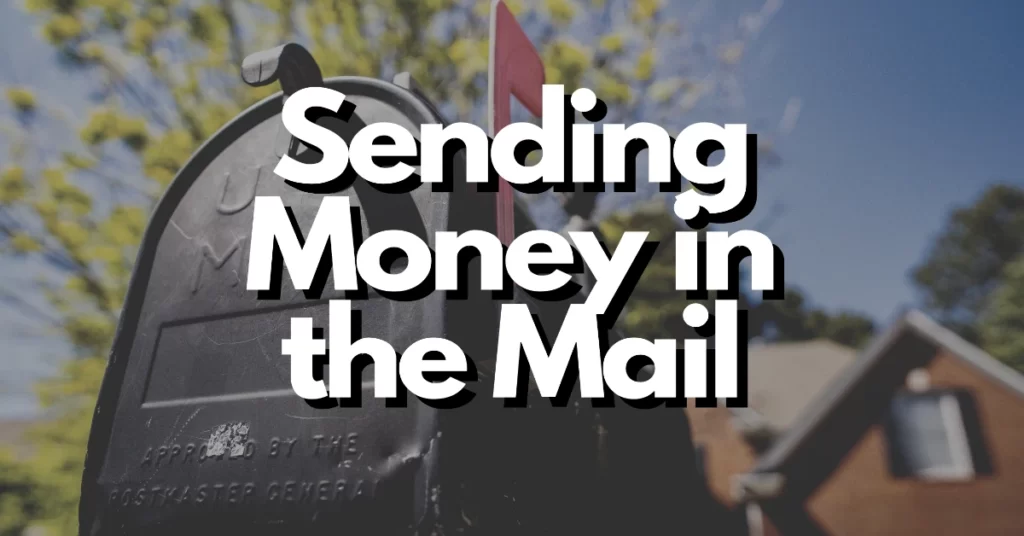In an increasingly digital world, where online payment platforms and electronic transfers have become the norm, the question arises: should you still send money in the mail? While it may seem convenient or traditional, there are various risks and considerations associated with sending money through postal services.
This article aims to explore the pros and cons of mailing cash, examining factors such as security, reliability, and alternatives for secure money transactions. By understanding the potential risks involved and exploring alternative methods, you can make an informed decision about whether or not sending money in the mail is the right choice for your financial transactions.
Table of Contents
The Risks of Sending Money Through the Mail: A Comprehensive Analysis
Sending money through the mail poses significant risks that warrant a comprehensive analysis. From the moment you drop the envelope in the mailbox to its arrival at the intended recipient, there are numerous vulnerabilities. These include theft, loss, damage, and the lack of a secure tracking system.
Additionally, the possibility of interception or tampering increases the chances of fraud or identity theft. It is essential to understand these risks and weigh them against the convenience of mailing cash. Exploring safer alternatives can help mitigate these risks and ensure the security of your financial transactions.
Alternatives to Mailing Cash: Exploring Secure Methods of Money Transfer
Instead of relying on traditional mail services to send cash, exploring secure methods of money transfer provides greater peace of mind and protection. One alternative is utilizing electronic payment platforms that offer secure and encrypted transactions. Platforms such as PayPal, Venmo, or bank transfer services provide convenient and traceable ways to send money.
Another option is using certified checks or money orders, which can be purchased from banks or financial institutions and provide a verifiable payment method. Wire transfers, although they may involve fees, offer a secure and direct transfer of funds between accounts. By exploring these alternatives, you can choose a method that aligns with your needs and ensures the safety of your financial transactions.
Protecting Your Finances: Best Practices for Secure Money Transactions
Ensuring the security of your money transactions is of utmost importance. Implementing best practices can help protect your finances from potential risks and fraud. First and foremost, consider using electronic payment methods, such as online banking, mobile payment apps, or credit/debit cards, as they offer enhanced security measures and fraud protection.
It is also crucial to regularly monitor your financial accounts for any suspicious activity and report it immediately. When conducting transactions online, verify the website’s security features, such as secure connections (https://) and reliable payment gateways. Additionally, safeguard your personal and financial information by using strong, unique passwords and avoiding sharing sensitive details through unsecured channels.
By following these best practices, you can minimize the risks associated with financial transactions and protect your hard-earned money.
Weighing the Pros and Cons: Factors to Consider When Deciding to Send Money in the Mail
When considering whether to send money in the mail, it is essential to weigh the pros and cons and carefully evaluate the circumstances. Some factors to consider include the amount of money being sent, the urgency of the transaction, and the availability of alternative secure methods. The pros of mailing cash may include convenience, simplicity, and the absence of transaction fees.
However, the cons, such as the risk of loss, theft, or fraud, should not be overlooked. Additionally, factors like the reliability of mail services, the recipient’s location, and the need for a verifiable transaction record should be taken into account. Ultimately, making an informed decision involves assessing the potential risks and considering alternative methods that offer greater security and protection for your financial transactions.
Conclusion
In conclusion, sending money in the mail comes with inherent risks that should not be overlooked. While it may have been a common practice in the past, advancements in technology have introduced safer and more secure alternatives for money transactions. Electronic transfers, online payment platforms, and secure money transfer services offer convenience, speed, and increased protection for your finances.
It is essential to weigh the pros and cons, considering factors such as the amount of money involved, the urgency of the transaction, and the available alternatives. Ultimately, prioritizing the safety and security of your financial transactions should guide your decision-making process when it comes to sending money in the mail.

